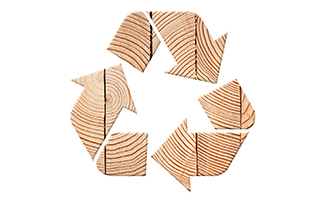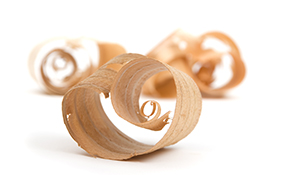Wooden packaging removed from service is looking for a purpose

The EU member states, the Parliament and the Commission reached a preliminary agreement on the amendment of six waste directives before Christmas. The targets for wooden packaging increased particularly heavily in relation to Finland’s current targets and recycling rates.
According to the proposal, the current 15 per cent recycling target for wooden packaging will go up to 25 per cent in 2025 and 30 per cent in 2030. The overall recycling target for packaging will be 65 per cent in 2025 and as much as 70 per cent in 2030.
In order to achieve the overall recycling target for all packaging waste materials, the recycling rate of wooden packaging waste needs to be increased significantly above the minimum target set for it.
Challenging targets
According to Jukka Ala-Viikari, Managing Director of PPK Oy, which is in charge of recycling wooden packaging in Finland, there are many challenges with the new targets. There is currently a shortage of recycling routes for wooden packaging.
– Unlike in Central Europe, we have little demand for the wood in wooden packaging in terms of recycling. There is plenty of virgin wood available in Finland. Forests grow quicker than they are felled.
Ala-Viikari says that in a country such as Finland, with sparsely populated areas, great distances and a long cold season, it would make sense to use discarded wooden packaging in combined heat and power generation. This, however, is not counted as recycling.
– In cogeneration, wooden packaging would also be utilised in neighbouring areas and not transported – using fossil fuels – for long distances to recycling facilities. Freighting is not very eco-efficient in any case. Whenever empty wooden containers are transported, a lot of air is transported as well.
Repairing or composting
The new proposal also counts activities such as repairing wooden packaging as recycling. Two-thirds of the recycled wooden packaging in Finland falls into this category. In Ala-Viikari’s view, it is difficult to increase the rate of repair of wooden packaging much.
– We are trying to repair standard pallets whenever possible and economically feasible. However, some of the packages that leave the market are in very bad condition; for example, a pallet may be in pieces after an accident.
One-third of recycled wooden packaging is chipped and then used for landscaping or as a composting material at waste-handling plants.
– This sector has no growth potential either. At waste-handling plants, composting has become less common now that waste treatment and recycling have become more efficient.
A new life as chipboard?
One suggestion is to recycle wooden packaging waste in chipboard manufacturing. Currently, however, there is only one chipboard factory in Finland, and it obtains the raw material it needs from the wood-derived by-product streams in the industry.
According to Ala-Viikari, PPK Oy is exploring recycling options with its partners in the chipboard industry in Finland and overseas.
– We are of course primarily interested in the Finnish market. It would not make sense to export raw materials to other countries and, consequently, also direct recycling subsidies there.

It is not easy to introduce new wood-based products to the market.
Patio flooring or insulation?
New applications have also been explored for recycled wooden packaging.
– One of the new ideas is wood-plastic composite, a combination of wood fibre and recycled plastic. Wood-plastic composite can be used in, for example, patio flooring, says Ala-Viikari.
Ala-Viikari points out that new recycling opportunities are not likely to be found any time soon. It is not easy to introduce new wood-based products to the market. Developing new technologies and production models always takes time.
– It might be possible, however, to use wooden packaging waste in other board-like products, and maybe also in the manufacture of insulating materials.
Attention to the statistics
Ala-Viikari says that one of the most readily available means of increasing the recycling rate would be to improve the method of compiling statistics. He hopes that producers registered with Rinki will fill in their annual declaration forms more carefully.
– For example, some of the wooden pallets are likely to be reported as having entered the market, even if it is really a case of reusing a pallet that has been used once or one that has been imported.
Only the first use of a new pallet, or after repair, as well as wooden pallets that have been imported should be reported as having entered the market.
Recycling fee guides the market
Changes were made to the recycling fees for wooden packaging at the beginning of 2018. This is also hoped to have an impact on recycling rates.
– Packaging types that are commonly reused have a lower recycling fee than, say, disposable packaging. Of course, the aim is to use more reusable packaging and less of the other type of packaging.
The FIN and EUR pallets, rental pallets and cable reels are types of packaging that are commonly reused. They are also repaired, which is counted as recycling.
– Standard packaging, however, simply won’t do in all situations. Many producers need packaging that is made to their specifications in terms of dimensions and product requirements, says Ala-Viikari.
Brainstorming is required
There are also other parties who find the new proposal challenging. We asked a few experts for their views on this topic.
– As it is, the most sensible application for discarded wooden packaging in Finland is to use it in the production of renewable energy, says Senior Environmental Adviser Maija Heikkinen from the Finnish Forest Industries Federation.
– The problem is a certain over-ambitiousness. At EU level, things are often seen from the perspective of Central Europe, where vast numbers of people live in a small area, says Pekka Vuorinen, Director of Energy and Environment at the Confederation of Finnish Construction Industries RT.
The interviewees’ visions are also supported by a recent report by the Ministry of the Environment (29/2015), which examined the use of wood waste in wood-composite patio boards, using wood waste rather than peat in multi-fuel boilers, and using wood waste in chipboard production either in Finland or Central Europe.
The utilisation of waste wood in power generation was found to be the best alternative in terms of net environmental impacts in Finland in all of the environmental impact categories studied.
– The industry will need to continue brainstorming for ideas on how to increase the recycling rate of wooden packaging waste. It’s not easy, Juhani Ala-Salmi, Director of Wood Package Operations at Versowood Oy, points out.
Text: Matti Välimäki